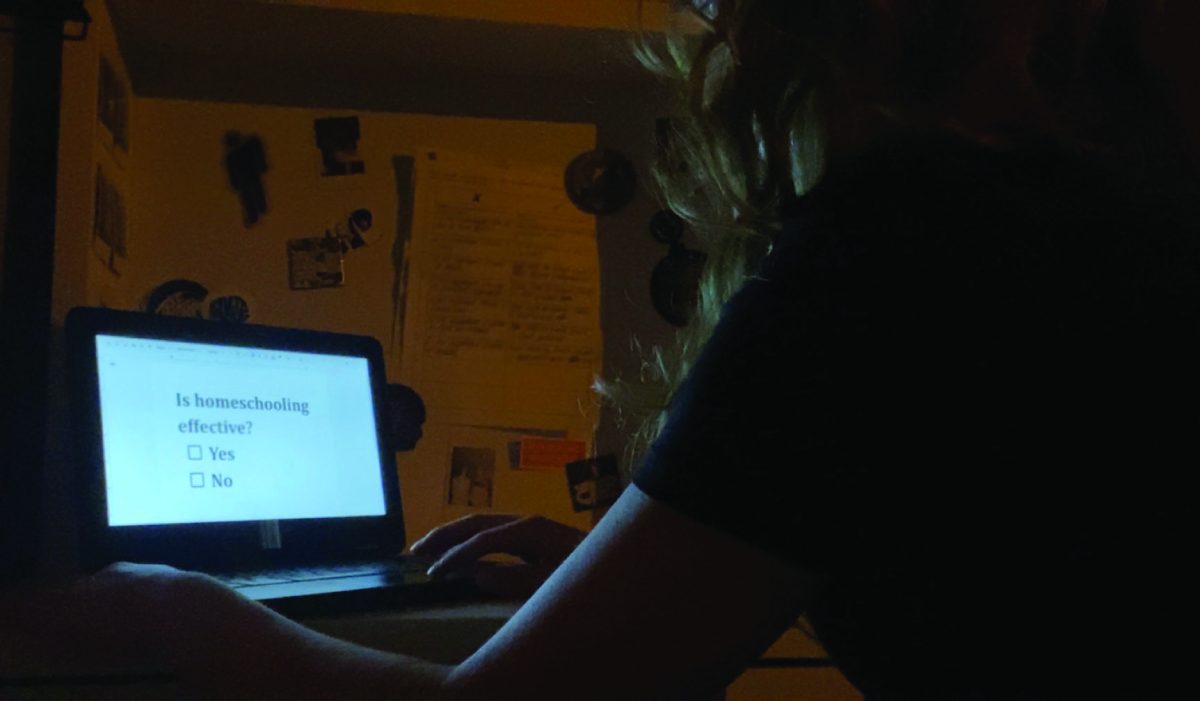Kids of the Quarantine
Is COVID-19 taking a toll on children’s development?

March 22, 2021
Imagine a normal day at school before the pandemic. No masks, no hand sanitizer and no group restrictions. You go to class and get to see your teachers’ and peers’ expressions below eye level, eat among hordes of other students at lunch, and watch Lincoln Southeast High School basketball games in packed stands. Now just imagine what you could do outside of school. Parties, concerts, social outings. These are all things that might’ve seemed normal a year ago but are largely forbidden today.
Now, say you were much younger, about five or six years old. Imagine the effects the COVID-19 pandemic would have on you mentally. No park trips, no playgrounds and especially no playdates. Terrifying, isn’t it? For some at least, it can be a very agitating experience. According to HealthyChildren.com from the American Academy of Pediatrics, young children may show a backward progression in developmental milestones, among other problems.
But this isn’t something to get too worked up on. Young children, who have been in the midst of the pandemic for an entire year, have excelled at working with its restrictions, especially under the guise of parents and educators. And as schools begin to fully reopen, they’re showing signs of understanding as well.
Damien Tran (12) is a student at LSE with two younger siblings: an 8-year-old sister and a 5-year-old brother. Being in 3rd grade and Kindergarten, respectively, the siblings often spent their time outdoors going to parks. But during lockdown, it became apparent how important electronics were in their day-to-day lives.
“My siblings enjoyed going to parks and hanging out with their cousins that live in Lincoln,” said Tran, “but with the pandemic, they’re addicted to their mobile devices. Sitting at home forces them to live a concurring lifestyle where they’re on their iPads 24/7.”
This frequent nuisance hasn’t stopped Tran from trying to help his siblings, though.
“To make it easier for my siblings,” Tran said, “I try to hang out with them when I’m not busy and get them to stay off their electronics. Sometimes, my little sister needs help with math or when practicing spelling words. Testing her ever so often is something I do, but not on a regular basis.”
Kyle Beacom is an AP US History teacher at LSE. Besides that, he’s also a family man with a wife and two kids. On the unexpected shift to quarantine life in March, Beacom said his kids had a hard time understanding how the pandemic would impact their lives.
“My son was too young to fully grasp what had happened,” Beacom said. “My daughter was sad to leave her pre-school friends so abruptly. My wife and I explained it to her as being like a ‘bad cold’ that was very contagious.”
This shift came with many ups and downs, resulting in conflicting emotions and an unnatural mix of work life and home life. This is true for Beacom, as well.
“Thankfully neither of our kids had to deal with remote learning last spring,” Beacom said. “However, trying to teach and manage Zoom meetings while having two young kids running around the house became tricky at times.”
One benefit of the pandemic’s effect on young children is that they’re generally less likely to contract COVID-19. In fact, according to the Center for Disease Control and Prevention (CDC), between March and September 2020, children aged 12-17 were twice as likely to catch the virus than those aged 5-11. There’s a catch to this, though, as the same younger age range is also more likely to be asymptomatic. Even if they do develop symptoms, they’re very easy to mistake for another illness: MIS-C, which is inflammation on various parts of the body.
Disease prevention is a very topical subject at the moment, given the strong influx of COVID-19 cases spurring from loosened restrictions in Nebraska and all across the nation. It’s extremely important to vaccinate children. Right now, immunizations of all kinds are encouraged among both young and old. This is especially true for children with an underlying condition. According to Harvard Health Publishing, they are at increased risk for severe illness.
A study from Brown University also suggests that superspreader events are also less likely to occur in schools. School outbreaks usually come from the immediate communities around schools, such as neighborhoods and city blocks, and are most commonly caused by forms of public resistance to infection mitigations. This could not be said for younger students, who are more effective at complying with COVID-19 measures on school grounds.
Following precautions has been difficult for some children, but for many others, it can be as simple as putting on a mask.
“My daughter has handled wearing a mask really well,” Beacom said. “Her biggest struggle has been not getting to see her cousins and friends in-person as much as she would like.”
This struggle is common among many families dealing with COVID-19. But this will be countered eventually. According to the CDC, missed life events shouldn’t be worried about too much, as they are just few of the many to come later. Instead, it’s best to focus on the healthy, positive aspects of the lockdown.
“Our family has focused on hand-washing, mask-wearing, and social distancing from the start of the pandemic,” said Beacom. “We have not had a lot of in-person contact since the pandemic started, especially since winter set in. It has tried my patience at times, but it seems this is a time where it is best to err on the side of caution. On the positive side, the pandemic has afforded me more time with my children.”
COVID-19 isn’t just crushed spirits. It can also bring people together in other unimaginable ways. This can be said for Tran and his friends, as well.
“Before COVID-19 had come into play,” said Tran, “I was able to hang out with friends frequently. Being active and going places was a big part of my life. Nowadays, I keep in touch with the same friends through playing video games [and] hanging out in small groups.”
During the summer months, local and national cases rose tremendously. This left many young children upset to be stuck inside yet again, unable to enjoy the joys of daily life as it once was. It can be extremely upsetting. As everyone is still in the midst of this crisis, it’s important for parents and siblings to recognize glooming feelings in children in order to help them dissipate as much as possible.
“Give them extra love,” Beacom said. “Spend more time talking to them and listening to them. Spend more time playing and interacting with them. Enjoy the weekends and nights stuck at home with your family because kids grow up too fast and time always wins.”









